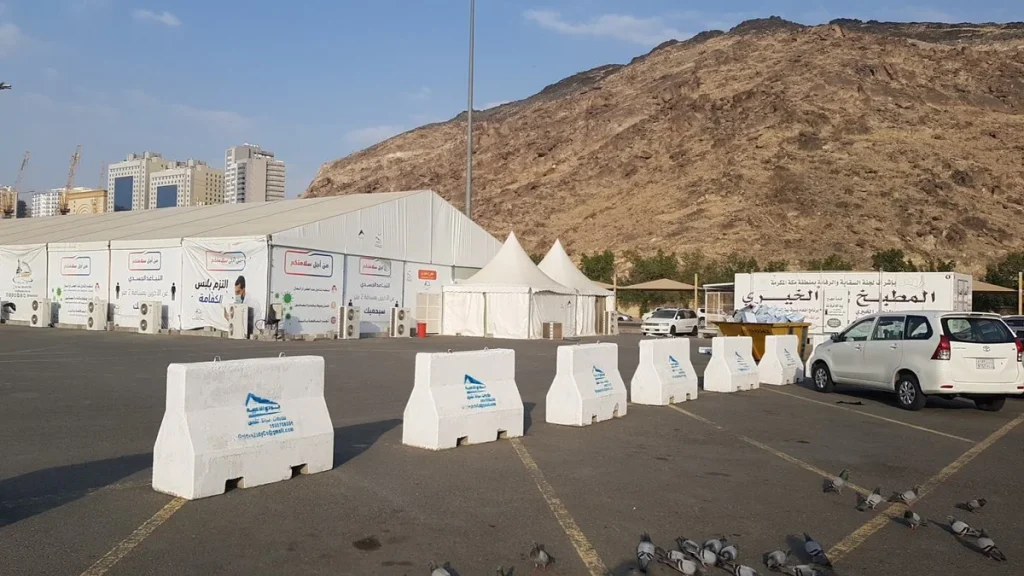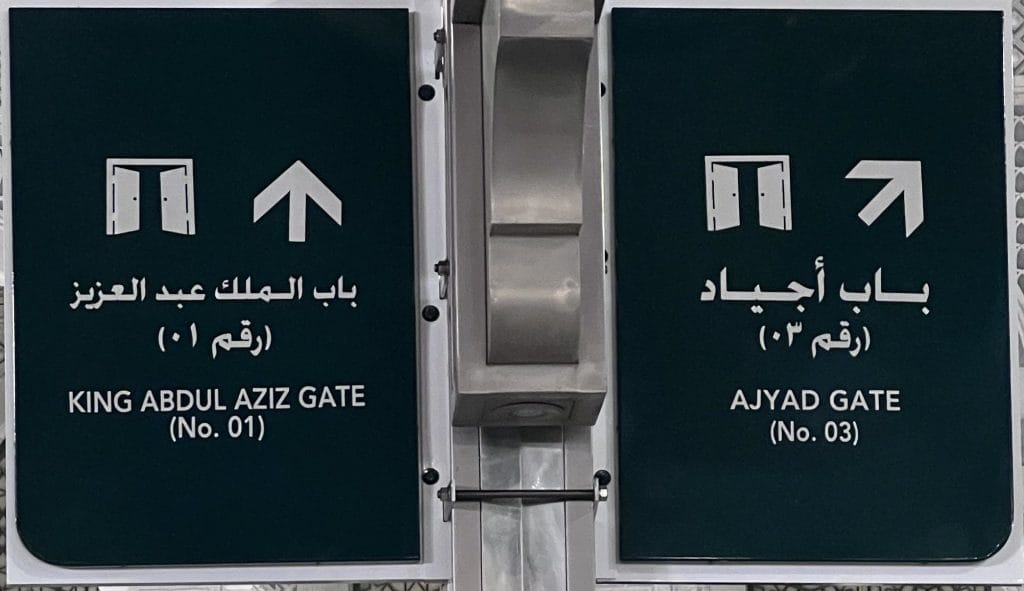Visiting the Grand Mosque in Makkah During Ramadan 2024: Essential Guide
Visiting the Grand Mosque in Makkah during the holy month of Ramadan is a profoundly spiritual journey for millions of Muslims from around the world. The mosque, being the holiest site in Islam, sees a significant increase in the number of Umrah performers and worshippers, especially during Ramadan. This surge not only elevates the spiritual atmosphere but also presents logistical challenges in terms of transportation, accommodation, and crowd management. Understanding these aspects is crucial for pilgrims to ensure a fulfilling and hassle-free pilgrimage. In this guide, we aim to provide comprehensive information on everything pilgrims and worshippers need to know before embarking on their sacred journey to the Grand Mosque in Makkah during Ramadan.
Getting to the Grand Mosque
Finding your way to the Grand Mosque in Makkah, especially during the busy month of Ramadan, requires some planning and awareness of the available transportation options. Here’s a breakdown of how to reach the mosque for your Umrah or prayer:
Public Transport Options

- Buses from King Abdulaziz International Airport: Pilgrims arriving at the King Abdulaziz International Airport in Jeddah can take advantage of the public transportation buses that directly connect to the central area surrounding the Grand Mosque. Similar services are available from various parking lots to public transportation stations in Makkah, easing the journey for worshippers.
- Haramain Train Service: Another efficient mode of transportation is the Haramain high-speed train, which offers a convenient route from King Abdulaziz International Airport to Rusayfah station in Makkah. From there, pilgrims can find various means of local transportation to reach the Grand Mosque.
See: Haramain Train Fares 2024
Taxis and Shuttle Transportation
- Taxis: For those looking for a more direct route, taxis are available to take you as close to the Grand Mosque as possible, adhering to the pedestrian safety requirements set by traffic officers.
- Shuttle Services: Utilizing shuttle transportation services can significantly ease the journey between parking lots within the Holy Capital and between public transit stations in the central area, offering a seamless transition for worshippers.
- Walking: For pilgrims staying in the central district and surrounding neighborhoods of Makkah, walking to the Grand Mosque is a feasible and often preferred option. It not only allows one to soak in the spiritual ambiance of the city but also avoids the congestion of vehicular traffic.
Parking Information
Finding a convenient parking spot near the Grand Mosque in Makkah, especially during Ramadan, can be challenging due to the increased number of pilgrims. Understanding your parking options, both within Makkah and in external areas, is essential for a smooth visit. Here are the details on parking facilities available for worshippers:
Inside Makkah Parkings
For those driving to the Grand Mosque, several parking lots within Makkah offer spaces to leave your vehicle before heading to the mosque. These include:

- Al-Zahir Parking: Located conveniently for those coming from different parts of Makkah, offering easy access to shuttle services.
- Kuday Parking: A viable option for those looking for a spot closer to the central area.
- Prince Mutaib Road Parking: Suitable for those approaching from the direction of Prince Mutaib road.
- Dugma Al Wabar Parking: Another option within the city, offering additional spaces for worshippers.
- Al-Rasifa Parking: Positioned to cater to pilgrims coming from the Al-Rasifa area.
- Al-Jamarat Parking: Ideal for those visiting or staying near the Al-Jamarat area.
External Parking
To accommodate the influx of vehicles during Ramadan, additional parking lots are available outside the central area of Makkah. These include:
- Al-Sharaya Parking: A spacious parking area for those coming from farther areas.
- Al-Laith Parking: Located towards the Al-Laith side, providing an alternative for pilgrims coming from that direction.
- Al-Nawariyah Parking: Another external option, suitable for those approaching Makkah from the Al-Nawariyah route.
- Al-Hada Parking: For pilgrims traveling through the Al-Hada area, this parking provides a strategic stopover.
- Jeddah Expressway Parking: Convenient for those coming from Jeddah, offering a direct route to public transportation services towards the Grand Mosque.
What to Know Before Your Visit
Prayer Times and Crowds
The Grand Mosque and its surroundings get particularly crowded before and during the prayer times, with the spaces designated for prayer filling up early. This is especially true for the times of Friday prayer, Maghrib prayer, Isha prayer, Tarawih prayer, and Tahajjud prayer during the last ten days of Ramadan. Pilgrims are advised to arrive early to find a suitable place for prayer.
Mataf Area for Tawaf
The Mataf area, designated for performing Tawaf, is exclusively allocated for Umrah performers throughout the day. This arrangement ensures the safety and ease of performing rituals. Pilgrims should follow the designated routes to enter and exit this area smoothly.
Prayer Spaces
Given the large number of worshippers during Ramadan, finding a convenient place for prayers can be challenging. The courtyards of the northern expansion of the Grand Mosque and other designated prayer areas provide ample space for performing obligatory prayers, Tarawih, and Tahajjud. Pilgrims are encouraged to explore these areas, especially during peak times, to ensure they can perform their prayers in a serene and respectful environment.
Finding Your Way Inside the Grand Mosque
The Grand Mosque in Makkah is equipped with various aids to assist pilgrims and worshippers in navigating its vast premises, especially during the crowded Ramadan season. Understanding these aids can greatly enhance your visit.

See: Map of Masjid Al Haram in Makkah
Helpful Security Personnel
Security personnel are stationed throughout the Grand Mosque and its surroundings. They play a crucial role in directing Umrah performers and worshippers to less crowded areas where space for prayer, Tawaf, and Sa’i is available. They are also instrumental in maintaining order and ensuring the safety of all visitors. Do not hesitate to approach them for directions or any assistance.
Illuminated Sign Boards
The main doors of the Grand Mosque feature illuminated sign boards that indicate the status of spaces inside. These signs use a simple color-coding system:
- Green lighting signifies that entry is permitted as there are available spaces for prayer.
- Red lighting indicates that entry is prohibited due to all spaces being occupied.
These sign boards are an essential guide for pilgrims, helping to manage the flow of crowds and preventing overcrowding in any one area.

Important Things to Know
Transportation Organization
To manage the high number of visitors during Ramadan, the transportation of Umrah performers and worshippers to and from the Grand Mosque is well-organized. Public transport buses facilitate movement from King Abdulaziz International Airport in Jeddah and from fourteen parking lots to the central area surrounding the Grand Mosque. This organized transportation is crucial in ensuring a smooth flow of pilgrims to and from their places of residence.
Pedestrian Importance and Vehicle Prohibitions
- Pedestrian Priority: Roads in the central area of Makkah are designated primarily for pedestrian movement, enhancing the safety and convenience of pilgrims. All types of vehicles are prohibited from passing through these roads during prayer times, ensuring a safe passage for worshippers.
- Vehicle Restrictions: Vehicles found parked in locations that could affect pedestrian safety are subject to being towed, and traffic violations are strictly enforced to maintain order and safety.
- Muhrim Restrictions: Vehicles driven by individuals in a state of Ihram (Muhrim) must park at designated lots at the entrances of Makkah and use public transportation for their onward journey.
- Prohibition of Motorcycles and Bicycles: The use of motorcycles and bicycles within the central area and roads leading to the Grand Mosque is banned, including their use for passenger transport for a fare.
Special Tawaf Instructions
Access to the Mataf area, designated for Tawaf, is facilitated through specific corridors and gates, ensuring an orderly and safe process for all pilgrims. Key gates for entry include:
- Umrah Gate
- Al Salam Gate
- King Abdulaziz Gate
- King Fahad Gate

These points of entry are strategically located to manage the flow of pilgrims entering and exiting the Tawaf area, minimizing congestion and enhancing the overall experience of performing the ritual.
Safety Precautions
Ensuring safety during your pilgrimage to the Grand Mosque in Makkah, especially during the crowded month of Ramadan, is paramount. Below are some essential safety precautions and accommodations to keep in mind for a peaceful and secure Umrah.
General Safety
- Avoid Rushing: In crowded areas, maintain calmness and move tranquilly to avoid stampedes. Especially after prayers or when heading to public transport stations, take your time and follow the crowd management signs and instructions.
- Consider the Elderly and Disabled: Be mindful of those who may require more time or assistance, including the elderly and disabled pilgrims.
- Follow Directions: Adhere to the directions provided by security personnel and illuminated sign boards, which are put in place to ensure your safety and the smooth flow of pilgrim traffic.
For Persons with Disabilities
- Special Accommodations: The ground floor of the Grand Mosque, except for the Tawaf area, is accessible and has been specifically allocated for people with disabilities to facilitate their participation in prayers.
- Electric Carts: For Umrah performers whose condition requires it, electric carts are available on the first floor to assist in performing Tawaf.
At Your Place of Residence
- Emergency Preparedness: Familiarize yourself with the location of the nearest emergency exit and fire extinguisher in your accommodation. This knowledge can be critical in an emergency situation.
- Electrical Safety: Avoid overloading electrical outlets and ensure that any flammable materials are stored safely away from heat sources.
- Use of Stairs in Emergencies: In the event of a fire, use the stairs instead of elevators. Following this simple rule can save lives.
- Gas and Electricity Management: Always turn off gas and electrical appliances when not in use or when leaving your residence to prevent fire hazards.
- Follow Civil Defense Instructions: In case of any emergency, the instructions of civil defense personnel should be followed promptly and without hesitation.
General Instructions and Prohibitions
To maintain the sanctity and safety of the Grand Mosque and its visitors, several instructions and prohibitions are in place. Adherence to these is essential for all pilgrims.
Umrah Permit and Visa Controls
- Permit Requirement: Pilgrims must obtain the necessary permit to perform Umrah and adhere strictly to visa regulations. This ensures a managed and organized flow of worshippers into the Grand Mosque.
- Document Safety: Keep your travel and identification documents in a safe place at all times to avoid any inconveniences during your stay.
Prohibited Actions and Items
- No Weapons or Sharp Tools: Carrying or bringing weapons and sharp tools of any kind into the Grand Mosque and its courtyards is strictly prohibited.
- Avoid Prohibited Activities: Activities such as collecting donations without authorization, selling or begging, and smoking within the precincts of the Grand Mosque are not allowed.
- Respect the Peace: Actions that disrupt the peace of Umrah performers and worshippers, or that hinder the facilitation of Tawaf, Sa’i, and prayer, are prohibited. This includes moving luggage and personal belongings into the Grand Mosque and its courtyards, or leaving them unattended.
In conclusion, visiting the Grand Mosque in Makkah during Ramadan is a deeply spiritual and fulfilling experience for Muslims worldwide. By following the guidelines, safety precautions, and respecting the sanctity of the mosque, pilgrims can ensure a peaceful, rewarding pilgrimage. May your journey to the Grand Mosque be filled with tranquility, reflection, and spiritual renewal.